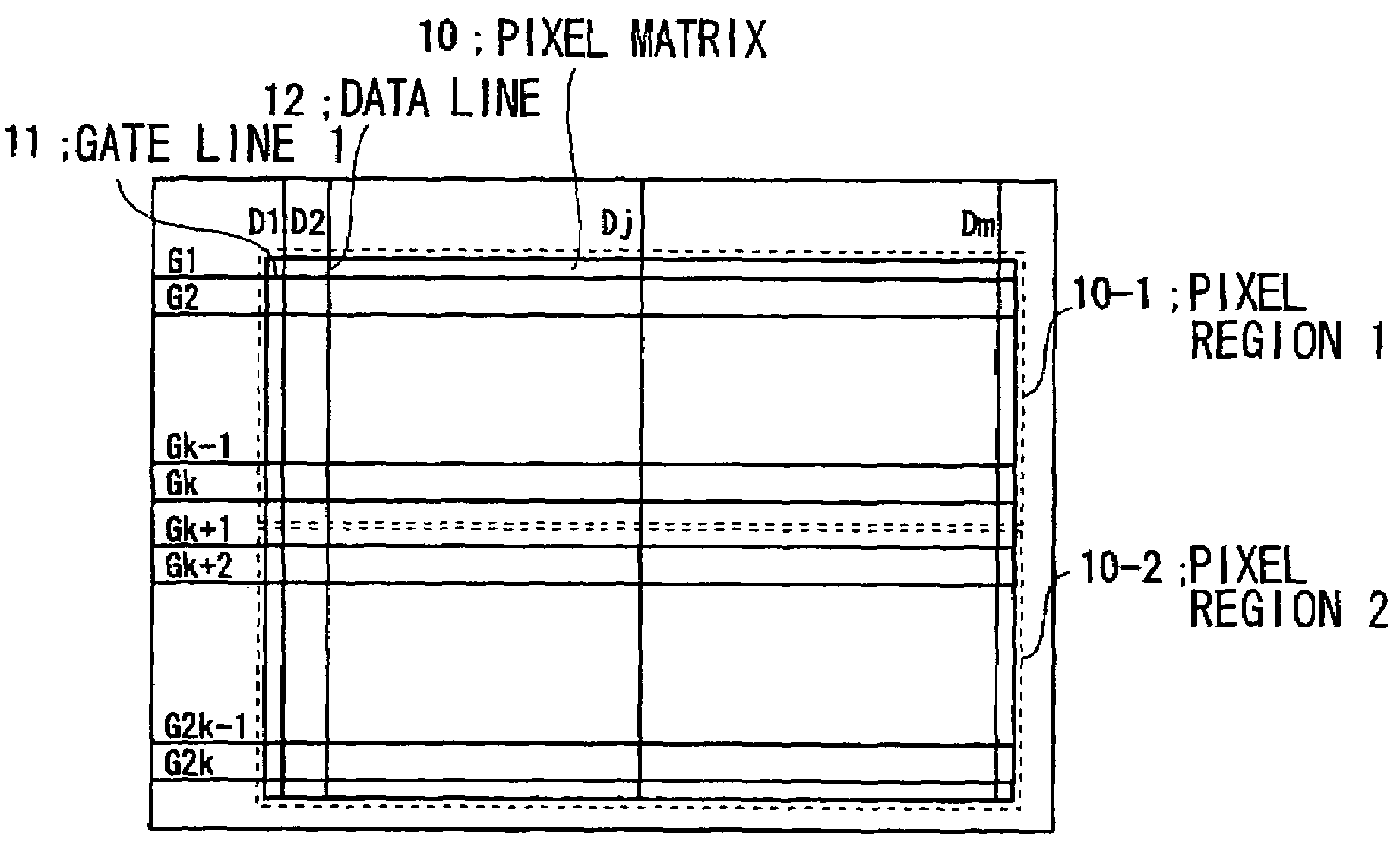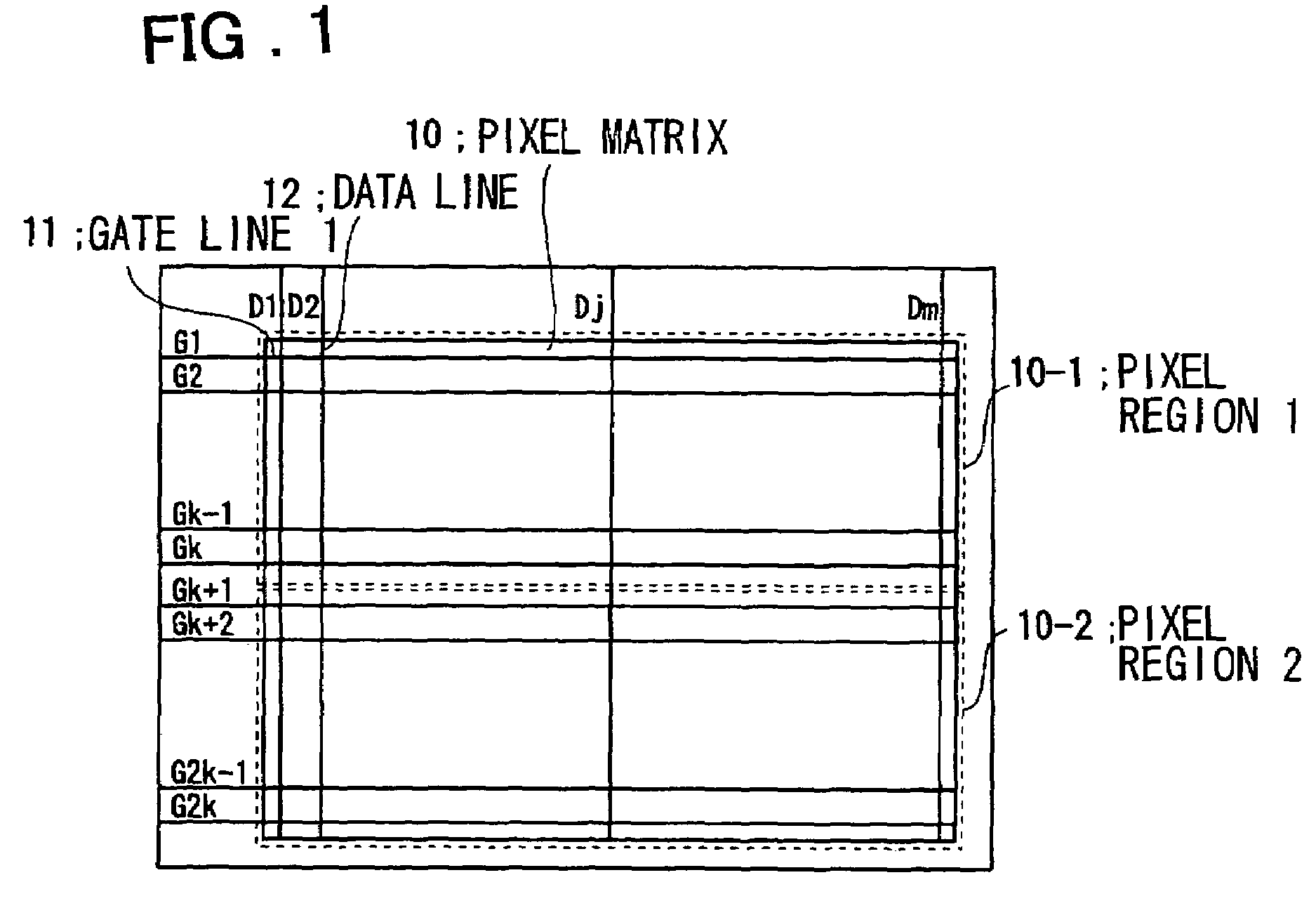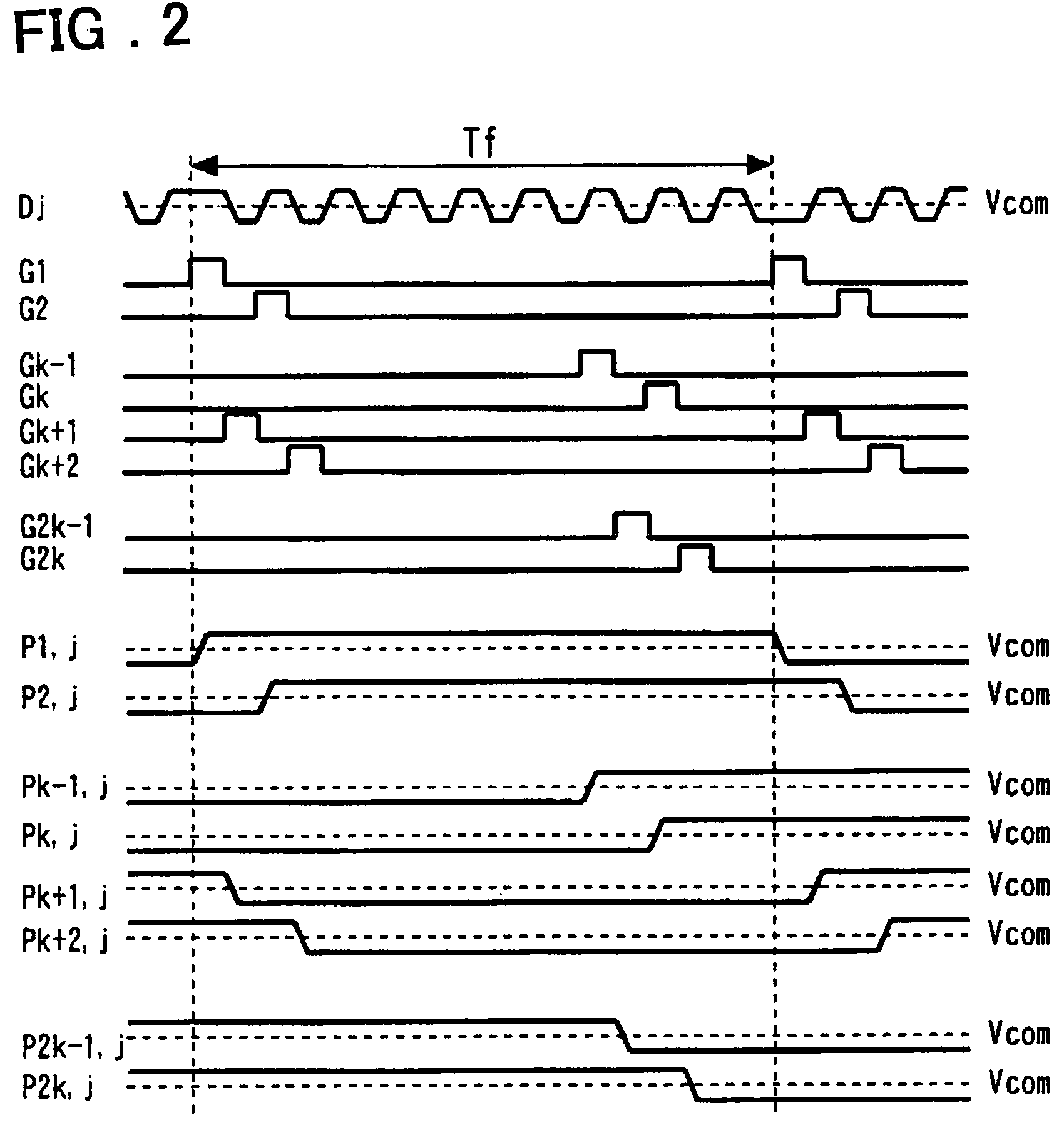Method for driving a liquid crystal display device
a liquid crystal display and display device technology, applied in the direction of static indicating devices, identification means, instruments, etc., can solve the problems of lowering the aperture ratio due to the orientation disturbance of liquid crystal molecules, the difficulty of applying the correct voltage on the liquid crystal, and the flicker becomes larger, etc., to achieve the effect of reducing the brightness of the screen, reducing the aperture ratio, and small strength
- Summary
- Abstract
- Description
- Claims
- Application Information
AI Technical Summary
Benefits of technology
Problems solved by technology
Method used
Image
Examples
second embodiment
[0108]Another embodiment of the present invention will now be described. An configuration wherein the pixel matrix is divided into 4 is shown in FIG. 8 as an example wherein the pixel matrix is divided into a number larger than 2. In the present invention, the pixel matrix 10 comprises pixel regions 10-1 through 10-4. FIG. 9 is a timing chart showing the operation of the configuration in FIG. 8. In FIG. 9, Dj denotes the signal voltage of the data lines 12, G1 through Gk, Gk+1 through G2k, G2k+1 through G3k, G3k+1 through G4k denote voltage wave forms of the gate lines of the first, second, third and fourth pixel regions, respectively. P1, j through Pk, j, Pk+1, j through P2k, j, P2k+1, j through P3k, j, P3K+1, j through P4k, j denote the potentials of the pixel electrodes in first to k-th pixel row (first pixel region), k+1 to 2K-th pixel rows (second pixel region), 2K+1 to 3k-th pixel rows (third pixel region9, and 3k+1 to 4k-th pixel rows (fourth pixel region), respectively. Hori...
third embodiment
[0116]A drive circuit for practicing the above-mentioned driving method will be described. FIG. 10 shows the configuration of the liquid crystal display device of the present invention. The liquid crystal display device comprises a pixel matrix 10 including pixels each comprising a pixel transistor 13, pixel capacitor 15, and storage capacitor 14 as shown in FIG. 3. Each pixel is disposed in each of intersections of the data lines denoted as D1 through Dm with the gate lines denoted as G1 through G2k. A liquid crystal is sandwiched between a matrix substrate on which the pixel matrix is formed and an opposite substrate (not shown) on which a common electrode common to the pixel electrodes of pixels is provided. The pixel matrix is divided into plurality of pixel regions which are in parallel with the gate lines. In an example shown in FIG. 10, the pixel matrix is divided into two pixel regions 10-1 and 10-2. It is of course that the pixel matrix may be divided to a desired number of...
fourth embodiment
[0127]In the embodiment shown in FIG. 10, the gate driver circuit 30 is disposed on only one side of the pixel matrix. The present invention is limited to such a configuration. In a fourth embodiment, the gate driver circuits 30-1 and 30-2 may be disposed on the both sides of the pixel matrix as shown in FIG. 17.
[0128]A fifth embodiment of the present invention will now be described. In the fifth embodiment, a pre-charge circuit 40 which is capable of performing preliminarily charging / discharge of the data line 11 (all data lines) of the pixel matrix to a desired voltage every one horizontal period is provided as shown in FIG. 18.
PUM
| Property | Measurement | Unit |
|---|---|---|
| frequency | aaaaa | aaaaa |
| polarities | aaaaa | aaaaa |
| voltage | aaaaa | aaaaa |
Abstract
Description
Claims
Application Information
 Login to View More
Login to View More - R&D
- Intellectual Property
- Life Sciences
- Materials
- Tech Scout
- Unparalleled Data Quality
- Higher Quality Content
- 60% Fewer Hallucinations
Browse by: Latest US Patents, China's latest patents, Technical Efficacy Thesaurus, Application Domain, Technology Topic, Popular Technical Reports.
© 2025 PatSnap. All rights reserved.Legal|Privacy policy|Modern Slavery Act Transparency Statement|Sitemap|About US| Contact US: help@patsnap.com



